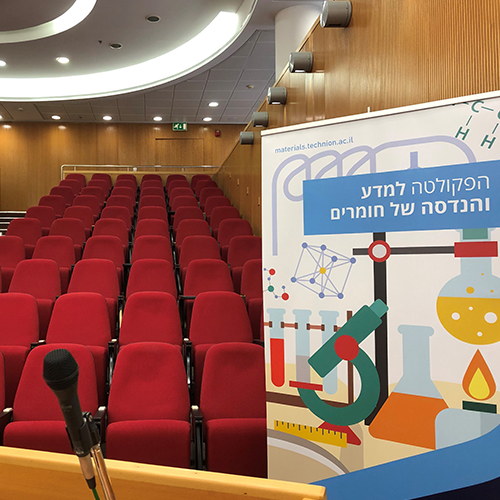
Ms. Neta Kurz - M.Sc. Candidate
10/11/2024
David Wang Auditorium, 3rd floor Dalia Meidan Bldg.
14:30
Ceramic Matrix Composites (CMC) are advanced materials designed for high-temperature environments, combining high strength and fracture toughness. One of the leading CMC materials for high-temperature aerospace structures is the C/C-SiC based on high strength carbon fibers, protected by a high temperature resistant silicon carbide (SiC) matrix. These composites can be produced using Reactive Melt Infiltration (RMI) with silicon (Si). However, SiC matrix cannot withstand working temperatures above 1600ºC for extended periods.
The development of CMCs capable of withstanding extreme temperatures necessitates the modification of the matrix material towards Ultra-High Temperature Ceramics (UHTCs). This requires novel approaches using different alloys to infiltrate the porous C/C body, producing a high content UHTC matrix such as zirconium carbide (ZrC).
In this work we produced the UHTCMC samples by the infiltration of a eutectic binary alloy Zr-8.8at%Si. This eutectic alloy allows reduced processing temperatures, thereby decreasing the fiber-melt reactivity that could lead to a severe degradation of the carbon fibers during the reactive infiltration process. Furthermore, we studied the effect of infiltration parameters on the reaction mechanism and the development of the final microstructure. Compression tests were performed to investigate the effect of processing parameters on the mechanical properties of the resulting UHTCMC samples. The results of this research demonstrate a feasibility of lowering the infiltration temperature to produce a more cost effective UHTCMC.
Supervisors: Prof. Eugen Rabkin, Technion
Dr. Itamar Gutman, Rafael


